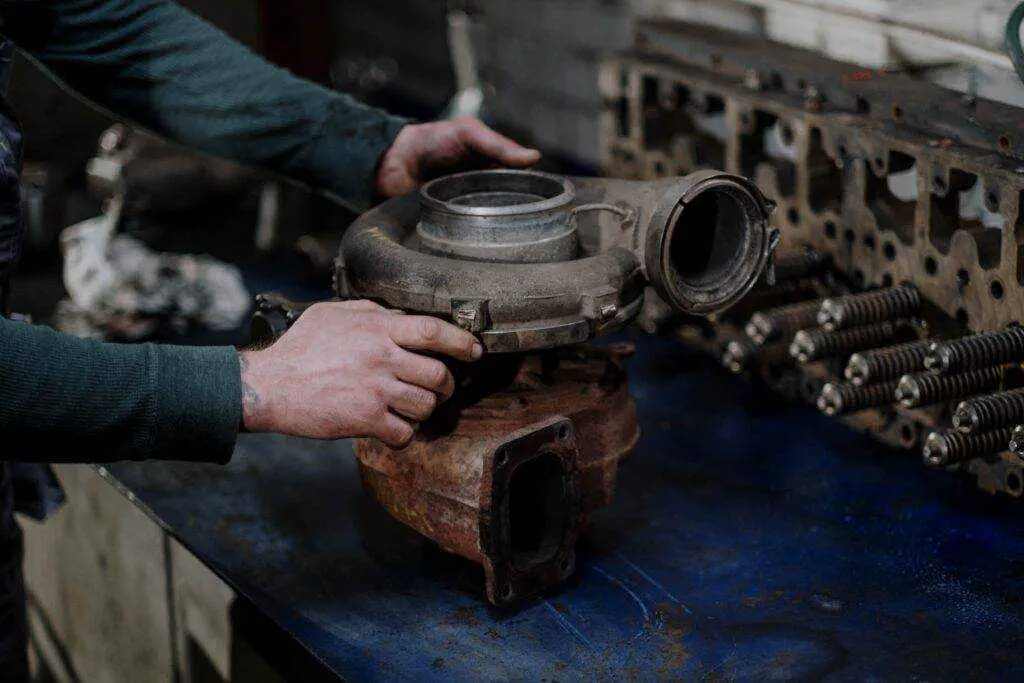Can low oil cause the check engine light to flash? after an oil change is alarming. While low oil doesn’t directly trigger flashing, it can indicate problems stemming from low levels that require immediate attention. This article explores how oil monitoring works, what makes warning lights flash, and how low levels could potentially contribute to a flashing check engine light situation.
How Oil Monitoring Systems Operate
Can Low Oil Cause Check Engine Light To Flash? Before diving into warning light activation, let’s review how oil systems are monitored:
Oil Level Sensor
This measures the oil level in the engine sump and alerts the driver when low. It provides a direct reading of the actual oil amount present.
Oil Pressure Sensor
This detects drops in oil pressure within the lubrication system and engine bearing clearances. It infers adequate oil level and circulation.
Onboard Computer
The engine control module (ECM) processes signals from sensors and actuates dashboard warning lights when programmed thresholds are crossed.
So in summary, sensors supply key oil health data to the ECM which then illuminates warning lights based on that input. Now let’s look at what triggers a flashing event.
What Makes the Check Engine Light Flash?
Steady versus flashing check engine lights indicate issue severity:
Steady Illumination
Continuous lighting signifies less urgent faults like worn sensors or pending codes that require service soon but not necessarily immediately.
Flashing or Repeated Short Flashes
This points to an active severe fault requiring prompt action to avoid immediate engine damage, like catalyst-damaging fuel misfires.
So a flashing light means a critically demanding problem is occurring right now, not just a stored code or gradual wear. How does oil connect?
Can Low Oil Directly Cause the Engine Light to Flash?
A purely low oil level alone generally triggers a dedicated oil warning light, not the check engine light directly. But critically low oil can potentially contribute to immediate engine failures that do activate the check engine light flashing, like:
Oil Pressure Loss
As sections starve, oil pressure drops rapidly, which can abruptly seize bearings causing engine misfires and catalytic converter damage.
Oil Pump Pickup Malfunctions
Low oil levels can expose the pickup, allowing air influx that sabotages proper oil delivery and pressure control triggering rapid flashing.
So while the check engine light doesn’t directly monitor the oil level itself, critically low volumes can promote immediate failures of lubrication and pressure control which then manifest as flashing warning lights.
Interpreting Warning Light Behaviors
Analyzing the exact nature of the warning light activation often provides diagnostics clues:
- Brief single flashes indicate immediate faults like misfires or excessive catalyst temperature.
- Repeated short flashing signifies somewhat less urgent but still active issues like highly leaning fuel mixtures.
- Constant flashing can mean milder but still ongoing faults like consistent evaporative leaks.
You can cross-reference with oil symptoms to connect Can The Check Engine Light Come On for Low Oil? causes:
Low Oil Light
- Diminished performance
- Oil consumption increase
- Knocking at hot idle
Check Engine Flashing
- Sudden loss of power
- Illumination with higher RPMs
- Catalyst over temp code
So check for correlating low oil symptoms when puzzling over flashing check lights.
Why You Should Never Ignore a Flashing Check Engine Light
Can Low Oil Cause Check Engine Light To Flash? Driving with an active warning light flashing risks immediate and catastrophic engine damage stemming from the following:
Oil Starvation
Loss of oil pressure allows bearings and cams to seize from direct metal-on-metal contact.
Unprotected Revving
Higher rpm without sufficient oil film protection exponentially accelerates wear.
Catalyst Meltdown
Raw fuel and misfires quickly overheat the catalytic converter, melting the honeycomb structure.
Turbo Failure
Inadequate turbo bearing lubrication and cooling leads to the seizing of the impeller and rotating assemblies.
Don’t gamble with a flashing light. Safely pull over and call for a tow if oil issues are suspected.
How to Diagnose Can Low Oil Cause Check Engine Light To Flash?
To discern if low oil is contributing to the alert:
Check Oil Level and Quality
Ensure the oil is filled to the proper range on the dipstick. Inspect for fuel dilution and contamination.
Scan for Trouble Codes
This reveals the detected faults triggering the warning. Oil pressure, misfire, and catalyst temperature codes implicate oil.
Rule Out Other Causes
Consider failed sensors, electrical faults, worn ignition components, and pending repairs that could trigger the light independent of oil issues.
With codes pointing to oil, flashing is likely warning of critically insufficient lubrication protection.

Making Repairs to Stop Dangerous Flashing
If low oil quantity or quality is found to be the culprit:
Top Up Oil Level
Fill carefully to the proper range on the dipstick. Don’t just dump in extra.
Determine and Address Leaks
Inspect for external leaks at gaskets and seals. Repair oil consumption issues internally.
Change Oil and Filter
Old degraded oil can flash the light if it no longer maintains adequate pressure.
Replace Damaged Sensors
If bad oil level, pressure, or temperature sensors are implicated, install new OEM-equivalent replacements.
The light can be reset and the engine protected with sufficient high-quality oil restored.
Maintaining Healthy Oil Systems
Can Low Oil Cause Check Engine Light To Flash? You can avoid these emergencies through attentive maintenance:
Use Proper Viscosity Oil
Choose oil weights to meet your engine and climate needs, allowing adequate flow and protection.
Change Oil Regularly
Follow recommended intervals to keep clean oil in the system, reducing consumption and maximizing longevity.
Consider Additives
Detergent additives help disperse sludge that can sabotage pumps, clog channels, and consume oil.
With vigilant oil upkeep, flashing events can be averted. Don’t let your lubrication be caught off guard.
Don’t Gamble With Flashing Warning Lights
Can Low Oil Cause Check Engine Light To Flash? While flashing check engine lights have many potential causes, critically low oil levels can precipitate immediate lubrication failures triggering flashing events. If oil is suspected, safely pull over and call for assistance.
With attentive maintenance and avoiding leaks, you can ensure your oil warning stays quietly illuminated rather than angrily flashing. Stay alert and take flashing lights seriously – your engine’s health depends on it! Want to learn more about check engine light check this article Can The Check Engine Light Come On for Low Oil?
Frequently Asked Questions
Will low oil trigger check engine light?
Not directly, but critically low oil can cause lubrication failures like seized bearings and oil pump cavitation that produce drivability faults that then trigger a flashing check engine light.
What causes the engine light to flash?
The most common causes are misfiring cylinders, catalyst overheating, EVAP leaks, oxygen sensor defects, and any active emissions-related faults the ECU deems severe.
Can low oil cause the engine to misfire?
Yes, low oil pressure from a critically low level or loss of circulation can allow bearings to seize. This can bind the cams or crank, preventing valves from opening and causing misfires.
Can too much oil cause a flashing check engine light?
Not likely by itself. However overfilling can potentially cause misfires or catalytic converter damage from excess oil burning off, which could indirectly activate a flashing light.
How do I stop my oil light from flashing?
Stop oil level or pressure-related flashing by addressing critically low oil, changing degraded oil, fixing leaks triggering consumption, and clearing any faulty sensor trouble codes.
Will check engine light go off after the oil change?
If the light was triggered by issues like oil contamination, lack of oil pressure from low levels, or clogged pickup screens, then an oil and filter change can potentially clear the codes and turn off the light.
How does a car act when low on oil?
Common symptoms include reduced power and acceleration, engine knocking at idle, oil pressure warning light illumination, high-temperature readings, and check engine light flashing as lubrication fails.
What are the symptoms of low oil in a car?
Typical low oil symptoms include knocking, ticking, and whining noises from the engine, oil pressure warning light activation, high operating temperature, oil consumption increase, and loss of power during acceleration.
What indicates low engine oil?
The primary indicators are the oil level reading low on the dipstick, oil pressure warning light illumination, knocking noises from the lubrication system, noticeable loss of oil through leaks or consumption, and engine temperature increase.





